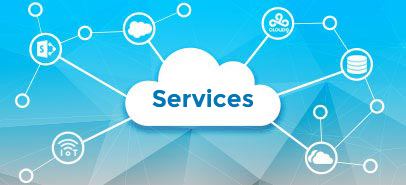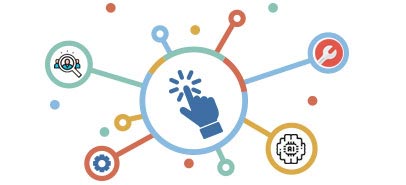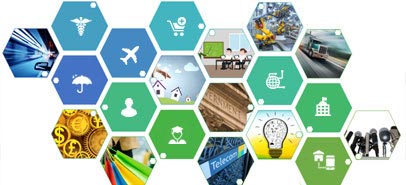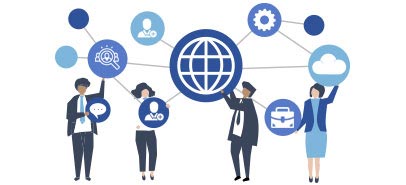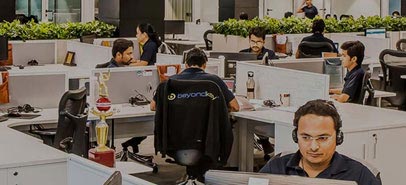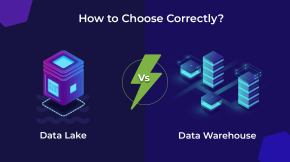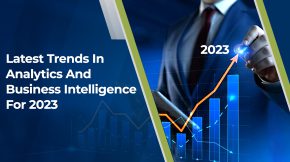How AI Proof of Concept Helps in Your AI Journey
In mid 2010, IBM introduced Watson. It was supposed to revolutionize medicine. But it didn’t due to data problems and missed analysis. Caused a lot of problems everywhere.
That taught us a lesson: Test AI before you use it. That’s what an AI proof of concept is for.
Why You Need One, and How to Make It Work
Artificial Intelligence (AI) isn’t just a trend; it’s becoming essential for businesses that want to succeed now. You’re probably thinking about how AI can help your company be more innovative and competitive. But jumping straight into AI can feel risky.
That’s where the ai proof of concept comes in. It’s not just a test; it’s a way to reduce risk and get the most out of AI.
The AI Adoption Roadblock: What’s Holding You Back?
Even though AI is popular, many companies aren’t using it fully. Why?
Here are some common reasons:
- Data Mess: “Our data is a mess. We don’t know if it’s good, easy to get to, or useful.”
- People Problem: “It’s hard to find and keep AI experts.”
- Money Question: “We’re not sure if AI will make us money.”
- Ethics: “We’re worried about AI being fair and following the rules.”
- Integration: “How do we add AI to our current systems without causing problems?”
- No Clear Goal: “We don’t know how AI can help us reach our business goals.”
An artificial intelligence poc can help with these concerns, making it easier to start using AI.
It’s a proof ai strategy.
The AI PoC: More Than Just Tech, It’s Strategy
An ‘ai proof’ is more than just a tech thing. It’s about making sure AI fits your business goals, reduces risks, and builds trust in AI across your company. It’s about showing real value and setting the stage for AI to work for you long-term. It’s also about learning what doesn’t work, which is just as important. It’s a generative ai proof of concept.
Using AI for Better Accuracy and Judging Performance
Normal ways of judging performance often involve looking at data by hand. This takes time, is open to interpretation, and can have mistakes. AI can automate and improve this:
- Automatic Data Analysis: AI can quickly look at lots of data to find patterns that people might miss.
- Fair Metrics: AI can give fair performance scores based on data, reducing bias.
- Predicting the Future: AI can use past data to guess future performance, so you can fix problems early.
- Watching in Real-Time: AI can watch performance as it happens, giving quick feedback and letting you make changes fast.
For example, in sales, AI can look at sales data to find top performers, understand why they’re doing well, and give advice to other salespeople.
In manufacturing, AI can watch machines to find problems and guess when they might break down, reducing downtime.
Using Smart AI to Cut Down on Guesswork
Normally, when developing products or improving processes, you have to try things out and see what happens. This can be slow and expensive. AI can help reduce the need for this trial-and-error:
- Simulating: AI models can simulate different situations and guess what will happen, so you can test ideas without building real prototypes.
- Making Things Optimal: AI can adjust settings in complex systems to get the best results, reducing the need for manual tweaks.
- Finding the Best Solutions: AI can explore many options and find the ones most likely to work, saving time and money.
- Learning Fast: AI can learn from data and experience, getting better at guessing outcomes and improving performance.
Consider a drug company making a new drug. AI can simulate how different chemicals will affect the body, reducing the need for clinical trials.
Or, in marketing, AI can improve marketing campaigns by guessing which messages will work best with different customers.
Reducing Risk with AI
AI can help reduce different kinds of risks:
- Money Risk → AI can find fraud, guess market changes, and improve investment plans.
- Operations Risk → AI can watch machines, guess when they’ll break, and improve supply chains.
- Following Rules Risk → AI can automate following rules, find violations, and make sure you’re compliant.
- Security Risk → AI can find cyberattacks, spot weaknesses, and protect data.
- Reputation Risk → AI can watch social media to find negative comments and fix problems before they damage your reputation.
For example, in finance, AI can watch transactions in real-time to find suspicious activity and prevent fraud.
In energy, AI can watch power grids and guess when there might be outages, reducing disruptions.
This is a key part of having a solid proof of concept ai.
Making a Data-Driven AI Proof of Concept
A good proof of concept ai isn’t based on guesses; it’s based on data.
This means:
- Clear Goals: Before you start, know how you’ll measure success. These metrics should be tied to your business goals.
- Get the Data: Collect all the data that relates to the problem you’re trying to solve.
- Clean It Up: Clean your data to make sure it’s good and consistent.
- Analyze: Use AI to look at your data and find patterns.
- Check Results: Make sure your results are accurate. Compare them to past data or do A/B tests.
Scaling Up and Making AI Last
An ai proof of concept is just the beginning. To get the most out of AI, you need to scale up your successful projects and make sure they last.
This means:
- Invest in Infrastructure: Get the right computers and software to support your AI.
- Build a Team: Hire AI experts.
- Set Rules: Create rules for how AI is used, including data privacy and security.
- Keep Improving: Keep watching and improving your AI solutions.
- Stay Updated: Keep up with the latest AI trends.
AI Proof of Concept: Dealing with Concerns
Let’s look at those initial concerns again and see how an ai proof of concept helps:
- Data Mess: The proof of concept ai forces you to fix your data.
- People Problem: A good ‘proof of concept ai’ can attract AI talent and shows you’re serious about AI.
- Money Question: The proof of concept ai shows the potential benefits of AI, helping you decide if it’s worth the investment.
- Ethics: The proof of concept ai lets you explore the ethical issues and create plans to deal with them.
- Integration: The ‘proof of concept ai’ lets you try different integration methods.
- No Clear Goal: The ‘proof of concept ai’ makes you define clear goals for your AI projects.
AI Proof of Concept Success Stories
Here are some real examples of how an ai proof of concept has worked:
- Retail: A store used AI to recommend products, starting with a proof of concept ai to see if it worked. The proof of concept ai showed a clear increase in sales, so they used it everywhere.
- Finance: A bank used AI to find fraud, starting with a proof of concept ai to check its accuracy. The proof of concept ai showed a big drop in fraud losses, so they used it more widely.
- Healthcare: A hospital used AI to predict patient readmissions, starting with a proof of concept ai to see if it would improve patient care and save money. The proof of concept ai showed better results, so they used it everywhere.
- Manufacturing: A factory used AI to predict when machines would need maintenance, starting with a ‘proof of concept ai’ to see if it would reduce downtime. The ‘proof of concept ai’ showed a significant reduction in downtime, so they expanded its use.
AI Proof of Concept is Your Way to the Future
The ai proof of concept isn’t just a tech project; it’s a way to get to the future. It’s how companies can confidently use AI, reduce risks, and get the benefits.
By using data, focusing on goals, and thinking about ethics, you can use the ‘proof of concept ai’ to innovate, improve efficiency, and get a good return on investment.
Don’t be afraid. Act now.
The future belongs to those who use AI strategically, and the ‘ai proof of concept’ is your first step.


